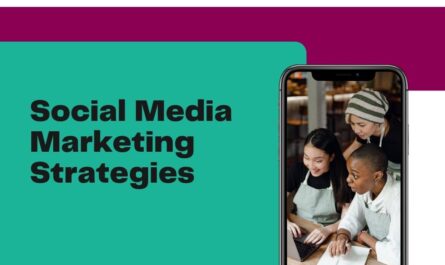Instagram Stories Advertising is a powerful tool for engaging with your audience. Let’s delve into this topic.
Instagram Stories Advertising: Captivating Your Audience
Instagram Stories have evolved into a prominent feature, offering businesses and creators an excellent opportunity to connect with their audience. Appearing at the top of users’ feeds, Stories provide a full-screen, immersive experience. To make the most of Instagram Stories advertising, here are some key strategies:
- Visual Allure
The crux of successful Stories advertising lies in visual appeal. Use high-quality images and videos to grab your viewers’ attention. Craft content that is aesthetically pleasing, attention-grabbing, and in sync with your brand’s style. Applying filters and effects can further enhance your content’s engagement.
- Keep It Short and Sweet
Instagram Stories are designed to be concise, with a maximum length of 15 seconds per story slide. Keep your content short, focused on a single message or call to action. It’s an opportunity to tell your brand story or convey your message within this time frame.
- Swipe-Up Links
If you’re operating a business or creator account with over 10,000 followers, you can incorporate a “Swipe Up” link within your Stories. This feature empowers viewers to visit your website, a product page, a blog post, or any URL you choose. It’s a potent tool for driving traffic and conversions.
- Interactive Features: Polls and Questions
Engage your audience with interactive features. Use polls and questions within Stories to collect feedback, respond to customer queries, or conduct market research through polls. This approach fosters a sense of community and interaction.
- Highlights and Archives
You can save your Stories as Highlights on your profile. This enables you to showcase and organize important content that your audience can revisit at any time. Creating Highlights for product tutorials, promotions, or FAQs is an excellent way to keep valuable content accessible.
- Targeted Advertising
Similar to regular Instagram ads, you can target your Stories ads to specific demographics, interests, and behaviors. This ensures that your content reaches the most relevant audience.
- Story Ads Formats
Instagram offers various Story ad formats:
- Photo Ads: Single images that appear between organic Stories.
- Video Ads: Video content that autoplays when users tap through Stories.
- Carousel Ads: Users can swipe through multiple images or videos within a single ad.
- Leveraging Carousel Ads
Carousel ads allow you to include multiple images or videos within a single ad. Use this format to tell a more comprehensive story, demonstrate different features of a product, or share a series of images that form a compelling narrative.
- Test and Optimize
A/B testing is crucial for your Instagram Stories ads. Experiment with different visuals, copy, and CTAs to identify what resonates best with your audience. Instagram provides analytics to monitor the performance of your ads, including reach, engagement, and click-through rates. Utilize this data to refine and optimize your campaigns.
- Interactive Storytelling
Create engaging and interactive Stories that encourage viewers to engage with your brand. Pose questions, use sliders, and provide clickable elements to make your Stories a two-way conversation.
- FOMO Marketing
Leverage the fear of missing out (FOMO) by showcasing limited-time offers, flash sales, and exclusive promotions in your Stories. Employ countdown stickers to build anticipation and urgency.
- Partnerships and Takeovers
Consider partnering with influencers or industry experts for Story takeovers. They can generate fresh, authentic content that exposes your brand to their followers. This strategy can be a win-win for both parties.
- Consistency
Maintain a consistent posting schedule for your Stories. Consistency builds trust and keeps your audience engaged. Plan your content calendar to ensure regular updates.
- Analytics and Metrics
Employ Instagram Insights to track the performance of your Stories ads. Pay attention to reach, impressions, exits, and engagement metrics. This data is invaluable for refining your advertising strategy.
By integrating these strategies, you can effectively harness the power of Instagram Stories advertising to boost brand awareness, drive traffic, and enhance conversions. The visually appealing and interactive nature of Stories makes it an ideal platform for reaching a highly engaged audience. If you have any specific questions or require further guidance, feel free to ask.
To ensure the success of your Instagram Stories advertising campaigns, it’s essential to follow some best practices:
- Contextual Ads
Adapt your content to the Story format. The visuals and message should align with the Stories experience. Avoid content that feels out of place in a personal feed.
- Test Multiple Audiences
Experiment with different audience segments to determine which one responds best to your ads. Testing can help you allocate your budget more effectively.
- Clear CTAs
Include clear and concise calls to action (CTAs). Whether it’s “Swipe Up,” “Shop Now,” “Learn More,” or any other action, make it explicit and compelling.
- Target Competitors’ Followers
Consider targeting the followers of your competitors. If someone follows a similar brand, they’re more likely to be interested in your products or services.
- Promote User-Generated Content (UGC)
Feature UGC in your Stories. Encourage your customers to create content related to your brand and share it on their own Stories. You can then share their content, giving it authenticity and credibility.
- Seasonal and Event Marketing
Leverage seasons, holidays, and events. Run themed campaigns during holidays or major events relevant to your business. This taps into the festive spirit and boosts engagement.
- Ad Placement
Choose where your ads appear wisely. The position of your Stories ad can impact engagement. In general, it’s beneficial to be among the first Stories in a user’s feed.
- Micro-Moments
Create ads that fit micro-moments – those brief instances when users turn to their smartphones for quick answers or inspiration. Addressing these moments can capture your audience’s attention.
- User Insights
Monitor your Instagram Insights for user demographics and behavior. This data can help you tailor your content to your audience’s preferences.
- Consistent Branding
Maintain a consistent visual style, color scheme, and logo placement in your Stories ads. This reinforces your brand’s identity and makes your content more recognizable.
- Influencer Partnerships
Collaborate with influencers to promote your products or services. Influencers can help extend your reach and boost the credibility of your offerings.
- Content Funnel
Guide viewers through a content funnel. Start with an attention-grabbing introduction, delve into the benefits of your product or service, and conclude with a strong CTA.
- Hashtags and Location Tags
Include relevant hashtags and location tags in your Stories to increase discoverability. Users can find your Stories through hashtag searches or geotags.
- Vertical Video
Instagram Stories are designed for vertical video. Create content that fits this format to provide an immersive viewing experience.
- Share User Success Stories
Feature case studies or success stories of your customers using your products or services. This showcases real-world benefits and builds trust.
- Feedback Loop
Interact with your audience by responding to comments and messages. Engaging with your viewers fosters a sense of community and connection.
- Ad Spending
Allocate your budget strategically. You can set a daily or lifetime budget, ensuring you don’t overspend. Monitor your ad performance and adjust your budget as needed.
Remember, Instagram Stories advertising is dynamic and requires constant adaptation. As new features and trends emerge, stay flexible and ready to incorporate them into your strategy. By following these best practices, you can maximize the impact of your Instagram Stories ads, enhance engagement, and drive positive results for your brand.
If you’re looking for more guidance or have specific questions about Instagram Stories advertising, feel free to ask.
After running Instagram Stories ad campaigns, it’s crucial to analyze their effectiveness. Measuring success allows you to optimize your strategies for better results. Here are some key metrics to consider:
- Impressions
Impressions indicate how many times your ad was displayed. A higher number suggests broader reach and visibility.
- Reach
Reach measures the number of unique users who saw your ad. It’s a significant metric for assessing your campaign’s audience impact.
- Click-Through Rate (CTR)
CTR represents the ratio of clicks to impressions. It measures how effective your ad is at prompting user actions. A higher CTR indicates engaging content.
- Conversion Rate
If your goal is to drive conversions, like website visits or product purchases, this metric is essential. It shows the percentage of users who took the desired action.
- Engagement
Engagement encompasses actions such as clicks, taps forward, taps backward, and exits. It indicates how well your ad keeps users’ attention.
- Return on Investment (ROI)
ROI quantifies the financial performance of your campaign. It compares the costs of running the ad to the revenue it generates.
- Cost Per Click (CPC)
CPC is the cost you pay for each click your ad receives. It helps you assess the efficiency of your budget allocation.
- Cost Per Conversion
If you aim to generate conversions, this metric is vital. It measures the cost of acquiring each conversion, providing insights into your campaign’s cost-effectiveness.
- Ad Position
Analyzing where your ad appears in users’ Stories feeds can reveal patterns related to engagement.
- Bounce Rate
For campaigns driving traffic to a website or landing page, the bounce rate is critical. A high bounce rate indicates that users aren’t engaging further with your content.
- Time Spent on Ad
The duration users spend watching your ad can indicate engagement. Longer watch times suggest a more compelling ad.
- Audience Demographics
Understanding your audience’s demographics can help you refine your targeting strategy for future campaigns.
- Share Rate
If users share your Stories ad with their followers, it’s a strong indicator of engagement and the ad’s impact.
- View-Through Rate (VTR)
VTR measures how many users watched your entire ad. A high VTR indicates that your content was captivating enough to keep users engaged.
- A/B Testing
Conduct A/B tests by creating variations of your ad to see which one performs better. This iterative process can help you fine-tune your content.
- Feedback and Comments
Monitoring user feedback, comments, and messages can provide valuable insights into audience sentiments and questions.
- Organic Reach
Analyze how many users saw your Stories ad organically, without paid promotion. This reflects your brand’s natural visibility.
- Competitive Benchmarking
Assess how your campaigns compare to your competitors. Identifying strengths and weaknesses can inform your strategies.
By evaluating these metrics, you can make data-driven decisions to enhance your Instagram Stories advertising campaigns continually. Remember, the digital advertising landscape evolves, so staying up-to-date with platform changes and emerging trends is vital.
If you need assistance with data analysis, interpreting these metrics, or crafting strategies to improve your Instagram Stories advertising, don’t hesitate to ask. Your success in the ever-changing world of digital advertising is our goal.





Hello! This is my first visit to your blog! We are a group of
volunteers and starting a new project in a
community in the same niche. Your blog provided us useful
information to work on. You have done a extraordinary job!
Hello there! Would you mind if I share your blog with my facebook group?
There’s a lot of folks that I think would really appreciate your content.
Please let me know. Many thanks
you can share
I every time spent my half an hour to read this blog’s articles or reviews every
day along with a cup of coffee.